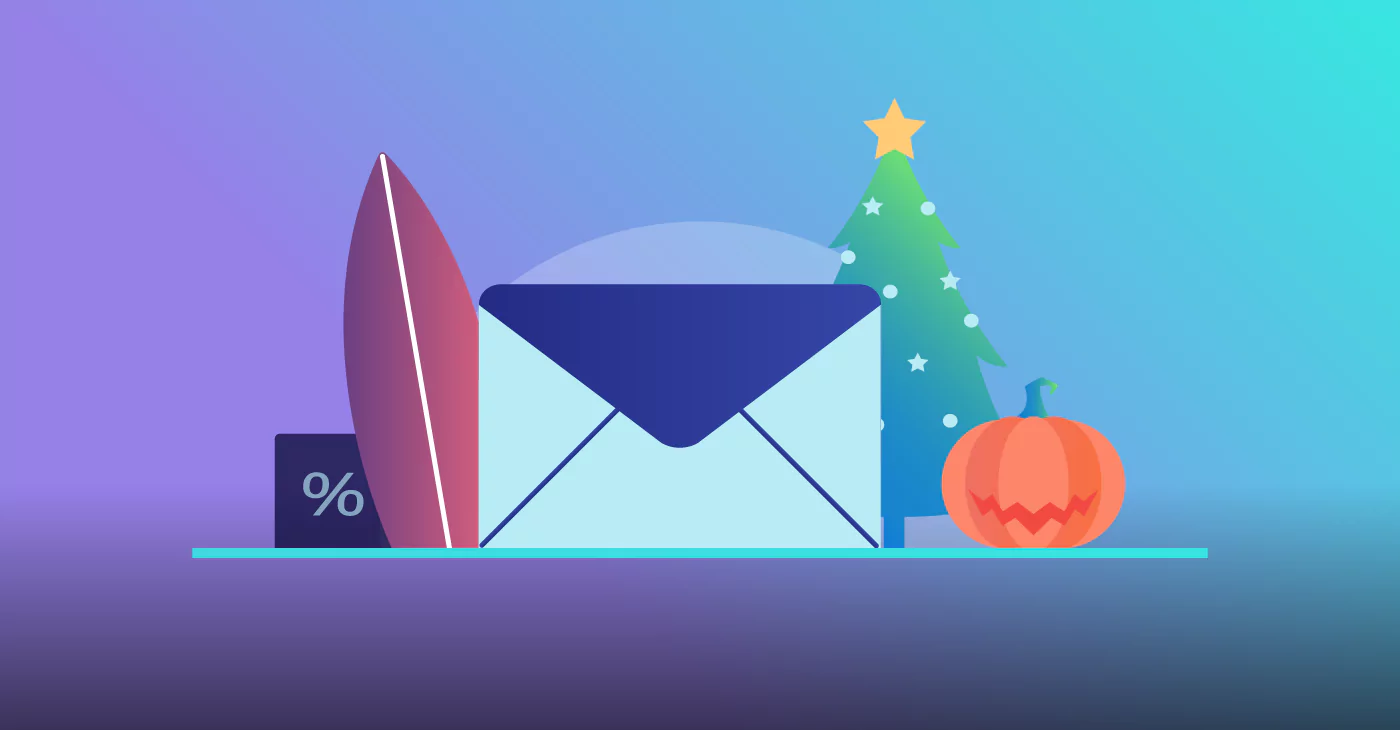The Small Business Guide to Surviving and Thriving During a Recession
March 17, 2023 10 min read

Owning a small business has tons of benefits. You’re essentially your own boss. You make the rules, and you hand-pick your staff. You get to steer your own ship, which is a huge privilege. However, with privilege comes sacrifices as well.
You dedicate a lot of time and resources to ensure your small business thrives, even under the harshest of circumstances. In a lot of ways, your small business is your baby. And you want to watch it grow to its potential.
Right now, there are plenty of obstacles to that growth. There are a recession, inflated costs, supply shortages, and shipping delays, just to name a few. Your small business is no doubt feeling the pressure, and you may be wondering how long you can tread water in this environment.
The good news is that you can get through this. Recessions aren’t new; in fact, they’re common in most economies. And as long as your small business has the tools and know-how, you’ll not only be able to survive these choppy waters, but you’ll be able to thrive, too.
In this guide, we’ll walk you through our biggest tips for getting through a recession and coming out on the other side.
But first, let’s look at some recession stats and see where other businesses stand.
Let’s Look at Some Stats
- 80% of small businesses are confident they can survive a recession.
- 43% of businesses still expect revenue to increase.
- 27% of small business owners say current conditions are strong.
- 35% of small businesses say they have been negatively impacted by climbing interest rates.
- 58% of businesses have explored areas to cut costs.
- In the 2008 recession, businesses’ advertising spend dropped by 13%. This provided 3.5 times more brand visibility for companies that maintained their marketing output.
- When it comes to the biggest concern for small businesses, 38% say high inflation, and 19% say supply chain disruptions.
How to Keep Your Small Business Sailing During a Recession
Need a survival guide? We’ve got you covered. Read on for some tried-and-true tips that will get you through to the other side of the storm.
1. Don’t Act Brash
The market fluctuates. The minute you catch wind of something bad brewing, don’t act just yet. Making big decisions quickly, like immediately putting a stop to your marketing, is never wise. The truth is that your competitors are still getting their brands out there, and if you take yourself out of the running, you’ll lose any potential new business opportunities you could have gained at a time when you needed them most.
It may make you nervous but keep your marketing consistent and don’t disrupt it too much. In marketing, we know that the results game is a journey, not a race. It can take a few months to see results, so stay the course. If, after a few months, you aren’t seeing any improvements, then that’s the time to adjust and make some changes.
2. Look at Your Numbers
Before worrying, take a look at your existing numbers to determine where your business stands. How you prepare will be determined by how your business is faring in this kind of climate. Are sales still good? It’s not common, but some businesses aren’t as affected by a recession as others.
If your business is doing okay, you may decide to hold off on cutting back spending for now. On the other hand, if your business is starting to suffer, you could take more precautionary measures that help you lessen the blow should things escalate.
Below are some key metrics to keep an eye on each month:
- Monthly recurring revenue (MRR)
- Marketing generated leads
- Sales generated leads
- Customer churn
- Renewed accounts
- Total revenue
- Revenue from existing customers
- Revenue from new customers
If any of these metrics take a sudden, drastic drop, then you’ll at least be able to match the problem with a specific area. It can tell you which processes need to be adjusted or which approaches no longer align with the way the market is going.
3. Examine Your Product Against Consumer Needs
Your business isn’t the only entity experiencing the recession. Your consumers are experiencing it too, which means their needs may have shifted.
When inflation happens, consumers tend to curb their spending because they’re either trying to save more money or they simply don’t have the funds they once had. This means you may have to focus on selling other products that align better with these new needs or discount your services in some way to help appeal to the market.
If you aren’t sure how to gain intel on your consumers’ needs, try emailing them surveys, asking them what their biggest priorities are, what they’re looking for, or what obstacle is keeping them from buying. You could also survey existing customers to gain insight into how your product is addressing their needs or if there’s anything you could be offering or doing better.
4. Adjust Your Sales Process
Whether or not your consumer needs have shifted, it’s also not a bad idea to examine your typical sales process and see if you should make some changes.
Maybe you’ve mostly relied on in-person events to make connections but are scaling back on those due to the recession. Or it could be a certain touch point that was always successful in converting a lead into a customer is no longer working.
By taking a closer look at your sales process, you’ll determine if any changes need to be made to accommodate the shifting landscape. Here are a few metrics that will help you make that decision:
- Cost of sales: If this is higher than what the team brings in as a whole, you may have an underdelivering, overstaffed sales team.
- Customer lifetime value: If your customers aren’t staying customers for very long, it could be that the sales process was not as thorough as it needed to be.
- Customer acquisition cost: This looks at all the resources you use to acquire new customers. If this total is more than what you make from new customers, it’s time to make some adjustments.
- Average time for conversion: This one is tricky, as you want it to be short but not too short. A long sales cycle isn’t necessarily a bad thing, as it tends to lead to more informed, long-lasting customers. However, it isn’t bad to keep an eye on this number in case it moves off its curve.
5. Utilize Automation
Almost every industry is experiencing labor shortages, which means you may have twice the work and half the team to get it done.
Automating your email and other marketing and sales-related outreach is extremely beneficial, as it does tons of important tasks for you so that you can focus on other areas of your business. With an automation tool, you can:
- Automate on-site lead generation so your inbound funnel is constantly being fed new potential buyers that are interested in what your business is selling.
- Send your subscribers newsletters and email series that educate them on your products and services and move them through the funnel closer to a sale.
- List segmentation so you can send personalized, tailored outreach that your prospects crave.
- Integrate a CRM so you can keep track of your leads and customers, and previous interactions, providing you with key profile information so you can know them (and their needs) better.
6. Focus on Retaining Your Existing Customers
Acquiring new customers, while necessary, is expensive. It costs money to run online advertisements and use tools that help you generate leads and increase your sales efforts. Customer retention, however, is much more cost-efficient.
When you focus all that time, money, and resources on acquiring customers, it’s extremely important that you have a practice in place that is dedicated to keeping them. Make sure you offer your loyal customers perks, rewards, promos, or even referral bonuses. Also, make sure you boost your support efforts. This can be done in a lot of different ways:
- On-site chatbots that help answer questions any time of day.
- A support line or email that customers can use when they have questions.
- A FAQ page that lists commonly asked questions and helps customers troubleshoot issues.
- A support team member designated to each account so your customers can rely on the same touchpoint for all their post-purchase needs.
- Weekly or monthly newsletters that share helpful content customers can use for further education.
- A knowledge base where all your product how-to’s, guides, and tutorials are housed.
We also recommend sending emails post-sale that help you re-engage customers and show them you’re still thinking of them. You can send them milestone emails on their birthdays or special promos or upgrades that not only encourage them to buy again but also provide them with value.
7. Identify Your Most Successful Channels
Part of marketing means testing various approaches and seeing which gets you the best results. It’s these high-performing channels that can be your saving grace during tough times.
If you’re finding that the paid ads you’re placing on LinkedIn are continuously driving a lot of traffic to your lead magnets, consider putting more spend towards those efforts. Or, maybe your SEO strategy is finally paying off, and you’re seeing your content rank higher for your targeted keywords. You may want to expand that strategy by adding more keywords to your list or even hire an SEO agency for some additional help.
8. Create Content
Content marketing, next to email marketing, is one of the most cost-effective marketing strategies you can arm your small business with. What’s great about content is that you’re in the driver’s seat. It’s all about spreading brand awareness, education, and showcasing your knowledge, and you’re the one that gets to write the narrative. It also can be used in various different ways that bring visitors to your website, convert them into leads, and nurture them towards a sale.
Here’s the type of content you should continue to create (or start creating) that will help keep your inbound marketing churning even during an economic downturn:
- Blog posts: A consistent, steady blog shows onsite visitors how much knowledge and experience you have within the industry, and it provides them with content to engage with. Include links to these in your monthly newsletters for additional engagement.
- Whitepapers: Put these on your website’s resource page and incorporate them into your drip campaigns so you can nurture leads with long-form, in-depth educational resources.
- eBooks: Gate these with an online form so you can use them to generate leads.
- Guest-contributed articles: You can place these on online publications that your audience reads, which helps boost SEO, and brand awareness and lead people back to your website.
9. Double Down on Social Media
In times of economic uncertainty, people turn to distractions, and one of the biggest distractions today is social media. Your audience is active on social media sites, scrolling through content, which makes it a perfect avenue to showcase your products and holiday promos.
If cutting back on lower-performing channels creates some room in your budget, it’s not a bad idea to put that spend towards social media advertising. It’s a great way to get your product and brand in front of the right people, as well as expand your reach.
A more cost-efficient way to utilize social media is to build out a calendar of content that engages your audience and showcases your brand, blog posts, and internal team. You can use it to make sure your network is privy to any deals you’re offering and direct them to purchase pages or lead magnets to drive sales. Or, you can double down on your social ads by filling your profile with additional resources and information, which can help encourage purchases from on-the-fence buyers.
10. Give Your Budget a Trim
We consider this step the last resort, and we only recommend doing it if you really need to make some drastic changes quickly.
Maybe there are some tools you forgot you’re signed up for that you aren’t using as frequently as planned. Or, maybe there’s a strategy you can take in-house instead of using an outsourced agency. Either way, go over your existing budget as carefully as possible to see where you might be able to trim some fat.
Meet with your department heads and go over their quarterly expenses. If there’s anything that isn’t contributing towards the success of your company, carefully consider removing it. When trimming your budget, it’s important to make sure that what you’re trimming are things that are no longer serving you.
Running a small business is never easy. Add a recession and a few other hurdles, and you may be wondering how you’ll be able to make it through. We hope that our actionable guide provides you with the resources you need to keep your boat afloat and sail smoothly through uncertain economic times, set up for success when the winds shift to a thriving economy. Good luck, and make sure you check out some additional resources below:
- 6 Marketing Goals to Keep Your eCommerce Leads Engaged After the Holidays
- Is Inflation Affecting Your eCommerce?
- 6 eCommerce Trends That Will Impact 2023
- How to Use Instagram to Sell
- The 5 Best Online Marketing Tactics for 2023
- 4 Shifts Your Small Business Needs to Prepare for This Holiday Season
- 5 Video Marketing Trends for 2023 and How Small Businesses Can Use Them
- How to Recession-Proof Your Agency
- How to Grow Your Small Business and Make it Successful
- How to Fund Your Budding Small Business During a Recession
- How to Grow Your Business After the Pandemic
- 5 Lessons That Will Help Your Business Get Through a Crisis
- 6 Tips to Get Your Small Business Through a Recession






